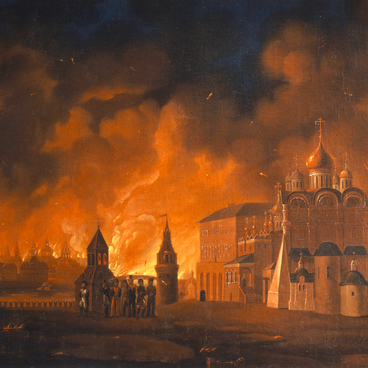According to the law on ‘conscriptions’ dated 1798, all men of France between the ages of 20 and 25 were liable for military service. The institutionalized term of service was five years, while in wartime military service was considered termless. That is what happened in the period 1805–1815 when wars waged by Napoleon’s empire actually never ceased.
In 1812 French artillery consisted of foot and horse artillery regiments. The biggest part of companies of the 8th regiment of foot artillery was assigned to the Imperial Guard. A gunner, a rank-and-file artillery man, was supposed to be able to make all sorts of artillery charges, guide and shoot the weapon.
The uniform of artillery men matched the uniform of the line infantry with slight distinctions: not only the tunics, but also the vests of artillery men were dark blue, whereas the infantry was wearing white vests. Despite the fact that artillery men were ordered to wear shoulder boards, many preferred scarlet epaulettes to them.
The gunner wears a shako of the 1807 model. The shako’s forehead badge depicts crossed artillery barrels, similar symbols were also used in Russian artillery. Above the badge a cocarde is fixed. Before the French revolution this cap insignia was white, but after it became white-red-blue, the national colours of France.
Also, the shako is adorned with decorative elements: a red pompom and a cord (‘etishket’). The shako cord was made from a flaxen braid, in artillery it was red. The left cord was short down to the lower edge of the shako and consisted of two small tassels. The right one was longer and employed more sophisticated braiding.
In 1812 Napoleon’s artillery men were armed with artillery musketoons (blunderbusses) which differed from their infantry counterparts in a lesser length and a brass block (fasteners). The gunner has a musketoon of the 1777 model.
The gunner’s cold weapon is an infantry sabre of the Republic’s 9th year model. Such a definition of the time in which the weapon was created was credit to the revolutionary traditions that changed the conventional chronology. The year 1792 when the Republic was proclaimed was declared the first year from which the count was made.
Behind the artillery man’s back is a pack made from cow hide on which a greatcoat roll (a greatcoat rolled into a bolster) is attached. Russian soldiers had leather back packs and they usually wore greatcoat rolls over the shoulder.
In 1812 French artillery consisted of foot and horse artillery regiments. The biggest part of companies of the 8th regiment of foot artillery was assigned to the Imperial Guard. A gunner, a rank-and-file artillery man, was supposed to be able to make all sorts of artillery charges, guide and shoot the weapon.
The uniform of artillery men matched the uniform of the line infantry with slight distinctions: not only the tunics, but also the vests of artillery men were dark blue, whereas the infantry was wearing white vests. Despite the fact that artillery men were ordered to wear shoulder boards, many preferred scarlet epaulettes to them.
The gunner wears a shako of the 1807 model. The shako’s forehead badge depicts crossed artillery barrels, similar symbols were also used in Russian artillery. Above the badge a cocarde is fixed. Before the French revolution this cap insignia was white, but after it became white-red-blue, the national colours of France.
Also, the shako is adorned with decorative elements: a red pompom and a cord (‘etishket’). The shako cord was made from a flaxen braid, in artillery it was red. The left cord was short down to the lower edge of the shako and consisted of two small tassels. The right one was longer and employed more sophisticated braiding.
In 1812 Napoleon’s artillery men were armed with artillery musketoons (blunderbusses) which differed from their infantry counterparts in a lesser length and a brass block (fasteners). The gunner has a musketoon of the 1777 model.
The gunner’s cold weapon is an infantry sabre of the Republic’s 9th year model. Such a definition of the time in which the weapon was created was credit to the revolutionary traditions that changed the conventional chronology. The year 1792 when the Republic was proclaimed was declared the first year from which the count was made.
Behind the artillery man’s back is a pack made from cow hide on which a greatcoat roll (a greatcoat rolled into a bolster) is attached. Russian soldiers had leather back packs and they usually wore greatcoat rolls over the shoulder.



